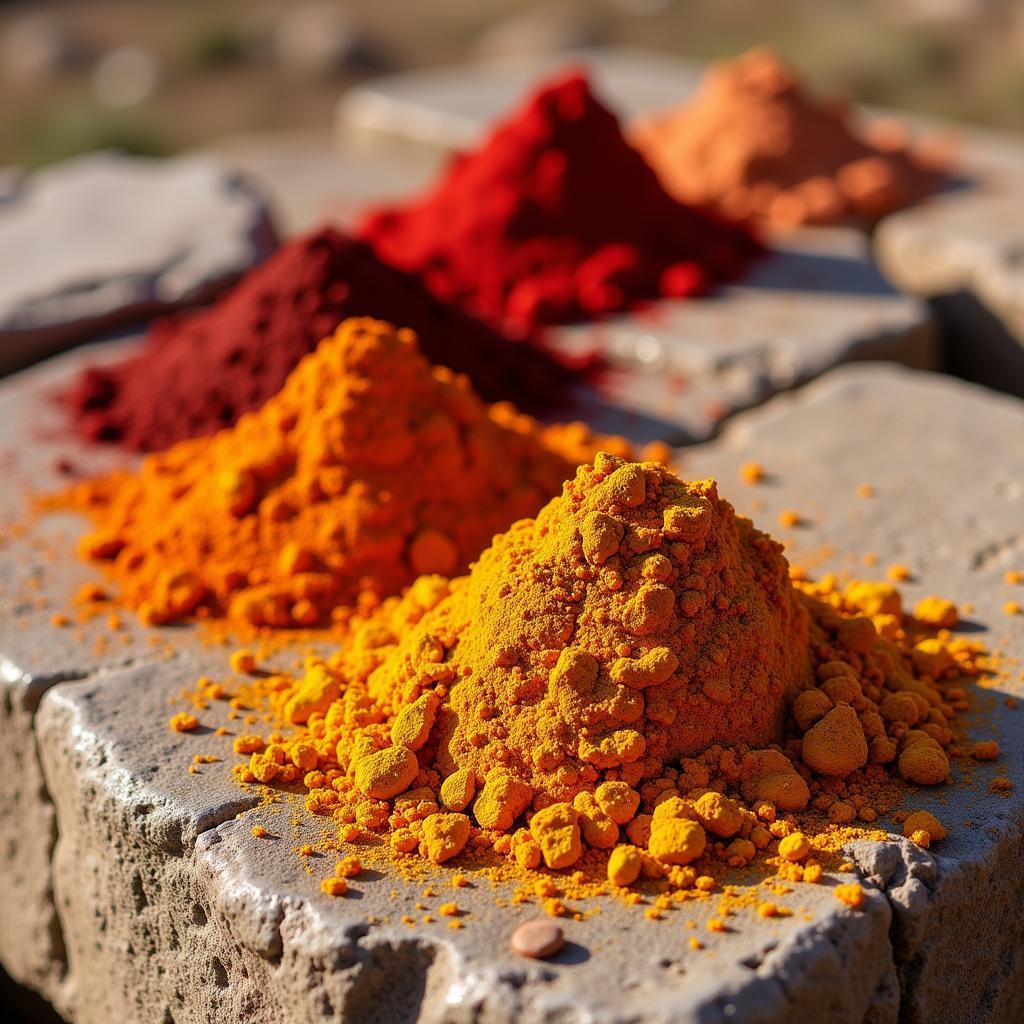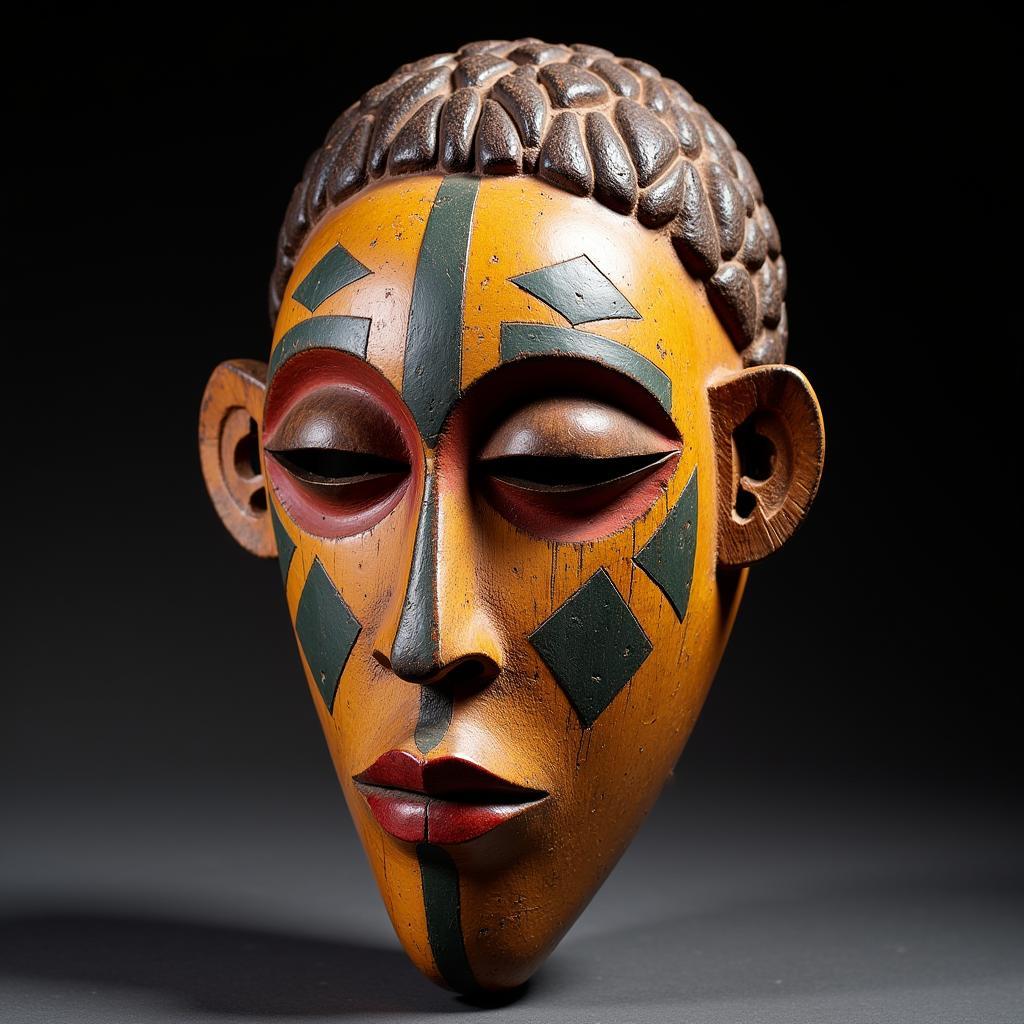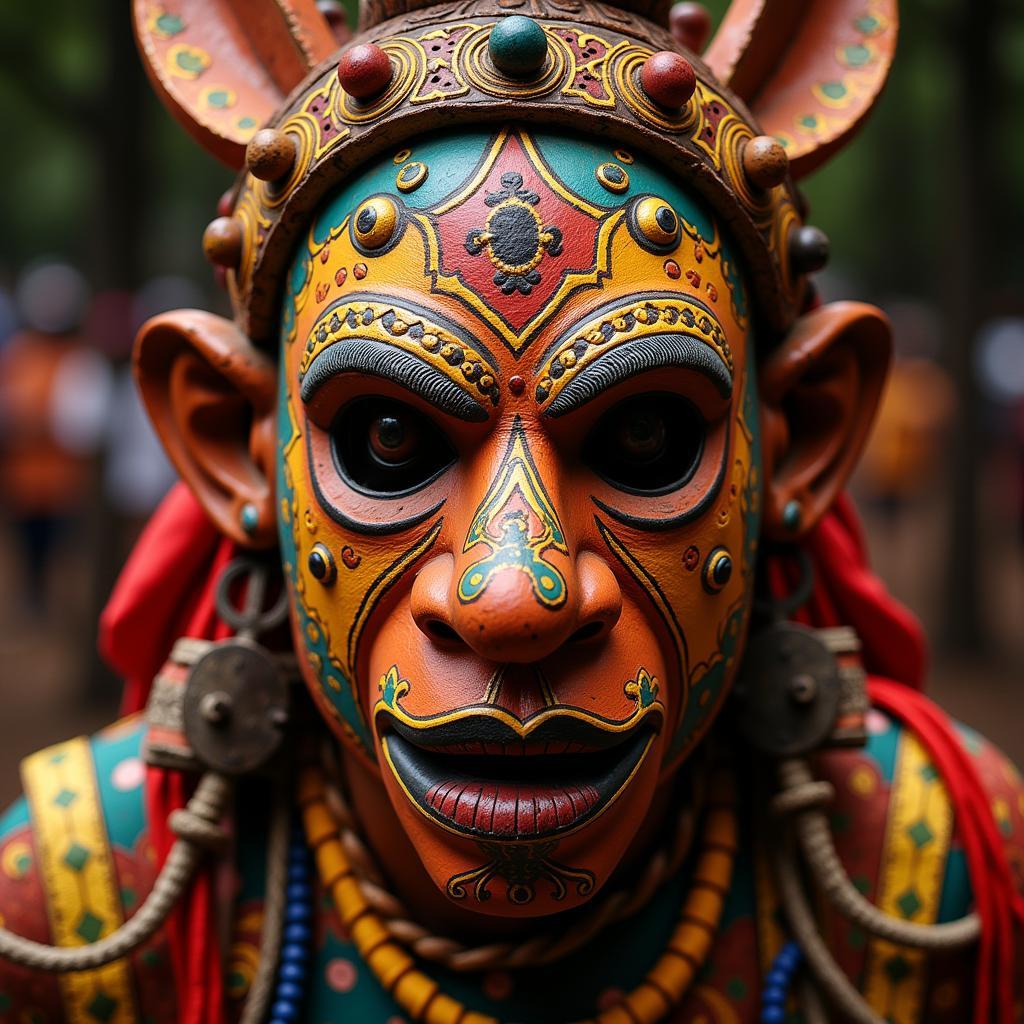Unveiling the Vibrant Story of African Art Colors
African Art Colors are more than just pigments; they are a language, a narrative woven into the rich tapestry of African culture. From the earthy ochres of ancient rock paintings to the vibrant hues adorning contemporary canvases, these colors pulsate with meaning, reflecting the spirit, beliefs, and traditions of diverse communities across the continent.  Ancient ochre pigments used in African rock art
Ancient ochre pigments used in African rock art
The Significance of African Art Colors
Color in African art isn’t arbitrary. Each hue carries symbolic weight, often linked to spiritual beliefs, social status, or natural elements. For example, red, a potent color in many African cultures, can represent blood, life force, or power. White, on the other hand, might symbolize purity, peace, or the spirit world. These symbolic associations imbue African art with depth and complexity, inviting viewers to delve beyond the surface and explore the rich layers of meaning. african art paintings pinterest showcases a diverse range of these symbolic colors.
Exploring Natural Pigments in African Art
Historically, African artists derived their colors from the natural world. Earths, clays, minerals, and plants provided a vibrant palette of pigments. Ochre, a naturally occurring iron oxide, was a particularly important pigment, used to create the warm reds, oranges, and yellows found in many ancient rock paintings and traditional masks.  An African mask showcasing vibrant colors derived from natural pigments You can find more about traditional african masks on our website.
An African mask showcasing vibrant colors derived from natural pigments You can find more about traditional african masks on our website.
The Evolution of African Art Colors: From Tradition to Contemporary
While natural pigments continue to be used by some artists, the advent of synthetic dyes and paints has expanded the color palette available to contemporary African artists. This has led to a vibrant explosion of color in contemporary African art, with artists experimenting with bold new hues and combinations. However, even with these new materials, the symbolic significance of color often remains, demonstrating the enduring connection between African art and its cultural heritage. african canvas wall art displays a vibrant mix of traditional and contemporary artwork.
What Colors Are Commonly Used in African Art?
Some of the most commonly used colors in African art, along with their typical symbolic associations, include:
- Red: Life force, power, blood, courage
- White: Purity, peace, spirituality, ancestors
- Black: Mystery, the unknown, night, sophistication
- Blue: Sky, water, healing, tranquility
- Green: Growth, fertility, nature, prosperity
- Yellow: Wealth, royalty, happiness, sunshine
How Do African Artists Create Their Colors?
Traditionally, African artists created their colors by grinding natural materials like ochre, charcoal, and clay into fine powders and mixing them with binders like animal fat or plant sap. Today, while some artists still use these traditional methods, many also utilize commercially available synthetic paints and dyes.
“Color is the soul of African art,” says renowned art historian Dr. Anika Olajide, “it’s the breath of life that animates the stories and traditions depicted in each piece.”
African Art Colors in Different Regions
The use of color in African art can vary significantly from region to region, reflecting the diverse cultural landscapes of the continent. For example, the vibrant indigo dyes used in West African textiles like those found at african garments store contrast sharply with the earthy tones often found in East African pottery. These regional variations add another layer of richness and complexity to the study of African art colors. You might also be interested in african head wraps wholesale.
“Understanding the nuances of color in different African art traditions is essential to appreciating the full depth and beauty of these works,” adds Dr. Olajide. “Each region has its own unique color language, reflecting its specific history, beliefs, and artistic practices.”
Conclusion: Appreciating the Richness of African Art Colors
African art colors are a powerful expression of cultural identity and artistic innovation. From the ancient ochre pigments of prehistoric rock art to the vibrant hues of contemporary paintings, these colors tell a story that spans centuries and continents. By understanding the symbolic significance and historical context of African art colors, we can gain a deeper appreciation for the rich cultural heritage of the continent and the creative genius of its artists.
FAQ
- What is the significance of color in African art? Color holds symbolic meaning, often tied to spirituality, social status, and nature.
- What are some common colors in African art and their meanings? Red symbolizes life force, white represents purity, and black signifies mystery, among others.
- How are African art colors created? Traditionally from natural sources like ochre, charcoal, and clay, but modern artists also use synthetic paints.
- Does the use of color vary across Africa? Yes, reflecting diverse regional cultures and artistic traditions.
- Where can I learn more about African art and its use of color? Museums, galleries, and online resources offer opportunities to explore this fascinating topic further.
- Why are natural pigments still important in African art? They maintain a connection to tradition and offer unique aesthetic qualities.
- How has the use of color in African art evolved over time? From natural pigments to synthetic paints, expanding the palette and artistic expression.
For any assistance, contact us at +255768904061, kaka.mag@gmail.com, or visit us at Mbarali DC Mawindi, Kangaga, Tanzania. We have a 24/7 customer service team.

